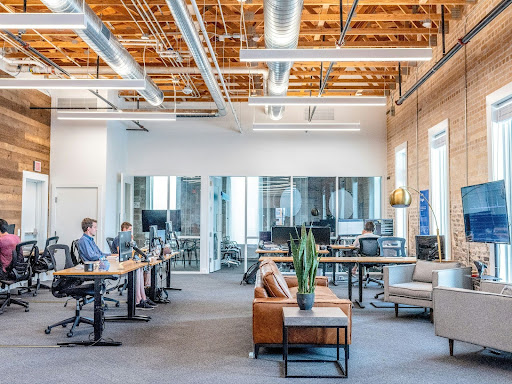
The return to office life is bringing with it old challenges and new opportunities, particularly around the design and functionality of workspace environments. In the post-pandemic era, the issue of noise and distractions in open-plan offices is not just a nuisance—it’s a critical focal point for innovation in office design. A Forbes article by Jena McGregor outlines how companies are navigating these challenges and turning them into business opportunities.
Embracing the Shift Back to the Office
The pandemic changed the landscape of work, with remote settings becoming the norm. However, as companies gradually mandate returns to the office, either full-time or part-time, employees are once again facing the longstanding issue of noise in open-plan office layouts. This transition back to office spaces is accompanied by an increase in office activities—more Zoom meetings, louder discussions, and more movement, which can disrupt the work flow and decrease productivity.
The Impact of Noise on Productivity and Well-being
Noise isn’t just annoying; it has tangible effects on worker productivity and health. Studies, including one cited by McGregor from the Journal of Management & Organization, have shown that typical noise levels in open-plan offices can increase physiological stress indicators such as heart rates and lead to negative moods among employees. This creates a significant challenge for employers who must balance the need for collaborative spaces with the need for quiet concentration areas.
Innovations in Office Design
Recognizing the problem is the first step, but addressing it is where innovation comes in. Companies like Intuit Mailchimp are leading by example, incorporating elements such as “library” spaces in their office designs. These areas are tailored for quiet and focused work, away from the hustle and bustle of the main office activities. These spaces often feature sound-proofing materials, serene decor, and are equipped with amenities that promote concentration.
Furthermore, vendors are finding a lucrative market in offering solutions like phone booth-style pods for private calls, soundscaping services that utilize natural sounds to mask office noise, and advanced noise-canceling technology. By creating these solutions, businesses are not only improving the quality of work life for their employees but also creating new revenue streams in the office design market.
The Future of Office Design
As we move forward, the trend towards re-cellularization of office spaces is gaining momentum. This approach involves creating more private spaces—huddle rooms, quiet zones, and even personal offices—that cater to the diverse needs of the workforce. Companies are realizing that if they want employees to return to the office willingly, they must provide spaces that support both collaborative and private work.
The shift back to the office is more than just a return to a physical location—it’s a move towards rethinking how office environments can enhance productivity and employee satisfaction in a post-pandemic world. As companies continue to innovate and adapt, the offices of the future will likely look quite different from those of the past, characterized by a blend of open plans and private havens, all designed to support the complex, varied needs of the modern workforce.
In conclusion, a noisy office may indeed be a nuisance, but it is also a profound business opportunity. By addressing this issue, companies can enhance employee well-being, improve productivity, and lead the charge in the evolution of office design.
As we navigate the evolving landscape of office design, recognizing the need for spaces that cater to both collaborative and individual work is essential. For more insights on innovative real estate solutions and tailored advice, visit the Bill Gladstone Group website. Our expertise in commercial real estate can help you adapt and thrive in this new environment

